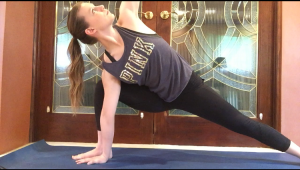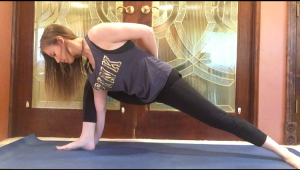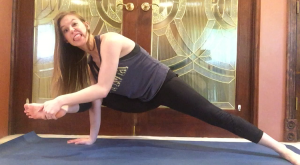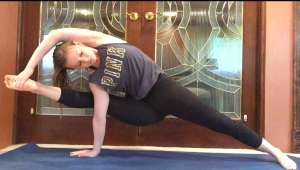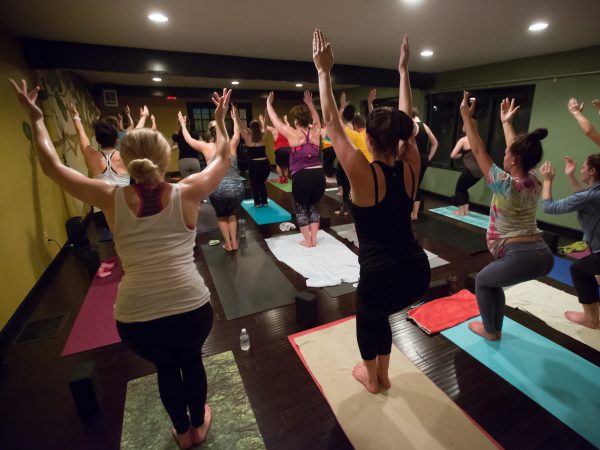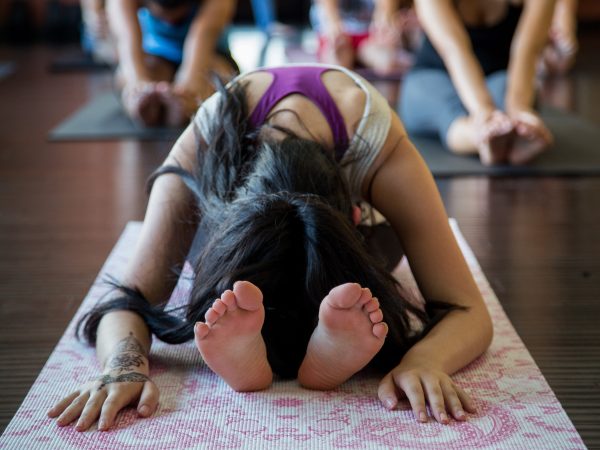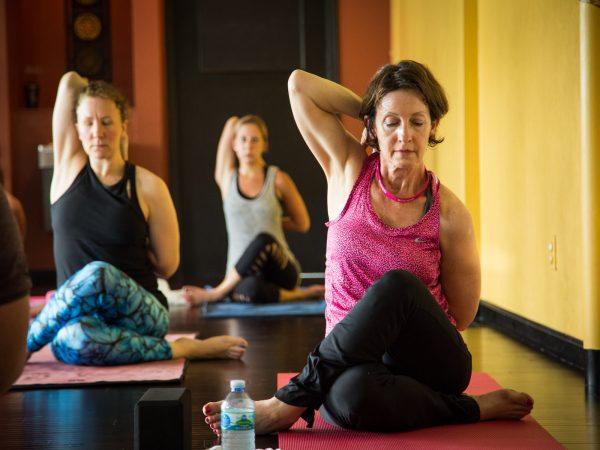On Storms
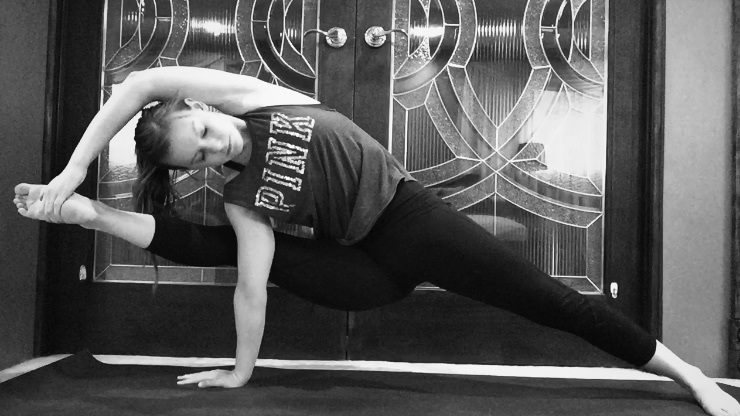
Storms are chaotic moments of beauty. The moment of silence before the clouds roll in, the wind starts to howl, and the rain starts to pour is filled with peace. It’s the pause after the earth has breathed in—and the pause before the earth sighs it out. It’s a moment of absolute acceptance; the earth is about to get weepy, and we all know it. It’s that moment when we accept that it’s going to happen, and all we can do is be content with what comes after.
Santosha is a lot like that. This Sanskrit word means “contentment,” or “complete acceptance.” It is one of the five niyamas of yoga, or one of the five disciplines. So how is santosha a discipline? You’d think that an observance of contentment in our lives would make us complacent. It would be easy, we think, to stop feeling motivated when we feel content. However, this is a lie that we tell ourselves. By feeling complete and whole in who we are, we end up having an even greater desire to take care of our bodies. If we accept who we are, it becomes a habit to do good for ourselves. Santosha seeks to give us what we as Americans so desperately need—self-confidence.
Growing up in Texas, I was an observer of more storms than I can count. Each one would fill up the sky, bursting the clouds to their seams with lightning and crowding the air with thunder. Lights would dance and sing through the darkness as we huddled in the closet (for tornado safety, of course). These memories are some of my favorite; because the electricity always went out during big thunderstorms, the entire family would sit huddled in the darkness with no phone service, relying on candles and flashlights for light—and conversations and laughter for passing the time. We would spend hours sitting underneath blankets, telling stories and eating snacks and feeling like we were the only people in the world. This, to me, was contentment. Doing nothing but being present with my family meant the world to me, and I carried that with me after the storms passed and life came back with full force. I felt whole with my family; and because of that, I strived to be the best person that I could for them. This doesn’t mean I never screwed up, or lost that sense of contentment from time to time, but it does mean that it made a difference in the way I lived my life.
Yoga is the same. When we leave room to feel accepting of where our bodies are at in our practice, our bodies can more easily relax—and also work harder, when we challenge ourselves. Take, for example, Visvamitrasana (pictured above). At first glance, this pose might not seem like a pose that is accepting of santosha. It is difficult, requires a lot of flexibility and strength, and is easy to fall out of. However, with the proper steps, time, and mindset, this pose is accessible to everyone.
First, begin in extended side angle on the right side with your right hand on the floor on the inside edge of your right foot. Take a deep breath to help open up your hips.
Then, move your hand to the outer edge of your foot, wrapping your arm underneath your knee. Press your forearm against the inside edge of that knee for balance and security.
After that, press deeply into your back foot, from your heel out to your pinkie toe. Lift your right foot off the ground with the help of your left hand, continuously pressing that forearm against your knee. Take a breath here to settle into your balance.
Finally, begin to straighten that right leg out to the side, extending your left arm over your head and opening your body to the side of the room, like you would in side plank. Three breaths here. You are in Visvamitrasana!
Now, notice the steps to get into the pose. Assess where your body is for each step—if you know your body isn’t ready yet for lifting your right foot off the mat, then don’t do it yet! Instead, start to bring your weight off of the foot and place it more in your right arm and left leg. Do this as many times as you need to, for as many days as you need to, before you feel like your body is ready to take the next step. This goes for all of the steps. And if you know your right leg isn’t quite flexible enough for straightening yet, then incorporate leg-and-hip-opening poses into your practice. Accept where your body is so that you can better care for it—and then notice how much farther you can reach when you allow yourself to feel good wherever you are at.
Next time you’re in a difficult pose, think of a storm in all of its chaotic beauty. It can be a complete mess, but it’s also just that—complete. And beautiful, despite the mess. Use that chaotic energy to drive you through the pose and find that peace before falling out and laughing and moving on. Feel good where you’re at. It’s the only way to drive yourself forward, like clouds in a storm. Whole and complete, but still growing. Still finding energy and movement—and peace.

